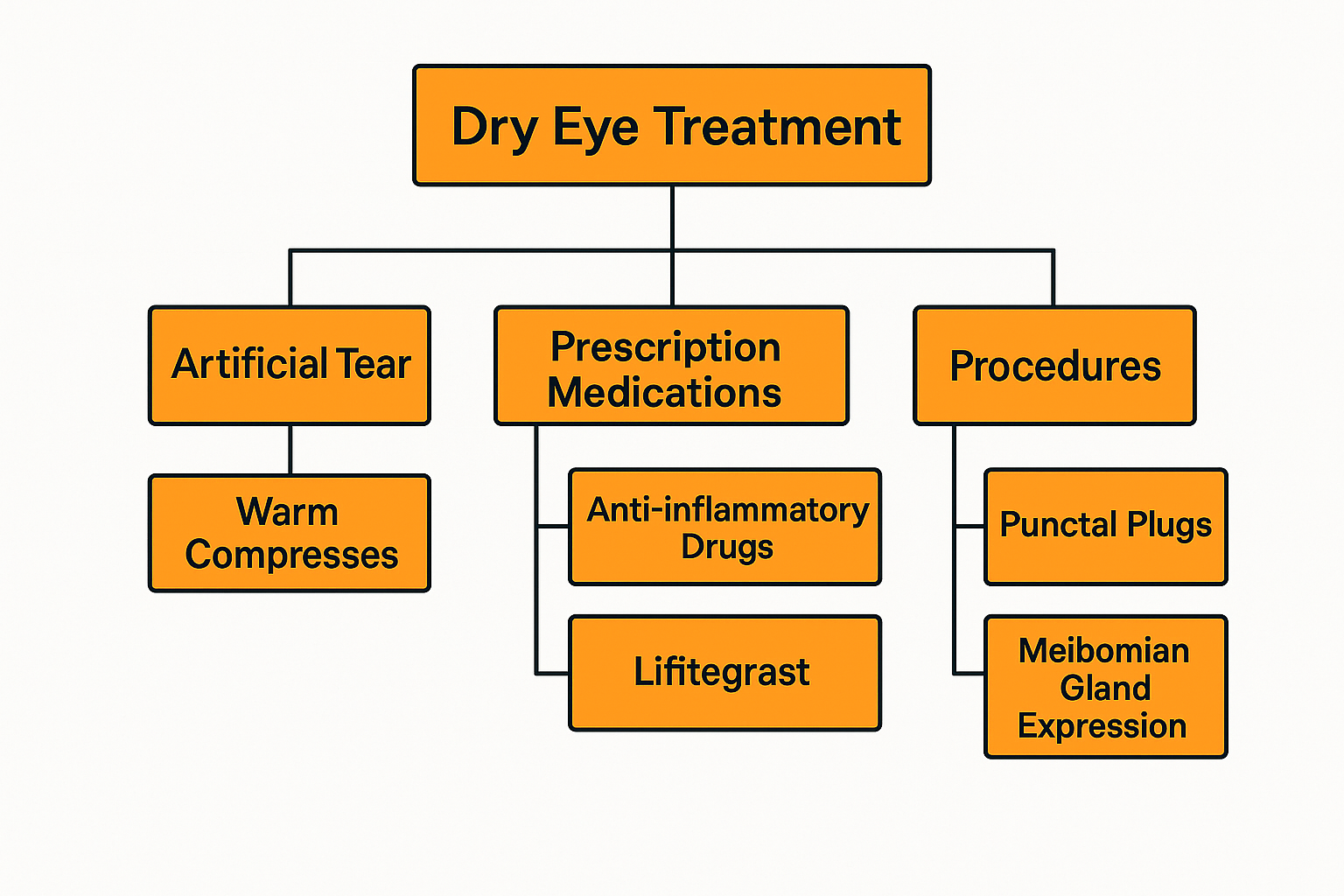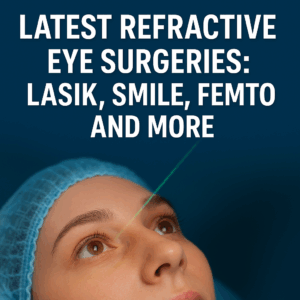
Anushka Super Speciality Eye Hospital
Call: 90044 44422 / 99213 44422 | Timings : 8.30 a.m to 5.30 p.m (Mon-Sat) | Add: Shri Swami Samarth Soc, Kaneri Dhamankar Naka, Bhiwandi




Accredited for Quality Care
Understanding Dry Eye Syndrome: Causes, Symptoms, Treatment & Prevention
anushka
28 July 2025
Dry Eye Syndrome is a common but often overlooked eye condition that affects millions of people worldwide. Whether you’re experiencing occasional discomfort or chronic irritation, understanding the root causes, symptoms, treatment options, and preventive measures can help you manage the condition effectively. In this comprehensive guide, we’ll dive into everything you need to know about Dry Eye Syndrome.
What is Dry Eye Syndrome?
Dry Eye Syndrome, also known as keratoconjunctivitis sicca, occurs when your eyes do not produce enough tears or when the tears evaporate too quickly. This results in inflammation and damage to the surface of the eye, leading to discomfort and vision issues.
Causes of Dry Eye Syndrome
- Age: Tear production decreases with age, making people over 50 more susceptible.
- Environmental Factors: Exposure to wind, smoke, or dry climates can increase tear evaporation.
- Screen Time: Prolonged use of computers and smartphones reduces blinking, leading to dryness.
- Medical Conditions: Diabetes, rheumatoid arthritis, thyroid issues, and lupus can contribute to dry eyes.
- Medications: Antihistamines, decongestants, antidepressants, and blood pressure medications can affect tear production.
- Contact Lens Wear: Long-term use of contact lenses can cause or worsen dry eye symptoms.
- Hormonal Changes: Especially in women during pregnancy, menopause, or while taking birth control pills.
Signs and Symptoms of Dry Eye
- A stinging or burning sensation in the eyes
- Sensitivity to light
- Redness of the eyes
- A feeling of having something in the eyes (grittiness)
- Watery eyes (as a response to irritation)
- Blurred vision, especially after reading or computer use
- Eye fatigue
If you experience any of these symptoms consistently, it’s essential to consult an eye care professional for a comprehensive evaluation.
Treatment Options for Dry Eye Syndrome
Dry Eye treatment varies based on severity and underlying cause. Here are the most effective options:
- Artificial Tears & Lubricating Eye Drops
- Over-the-counter artificial tears help supplement natural tear production.
- Preservative-free drops are preferable for long-term use.
- Prescription Medications
- Cyclosporine (Restasis): Reduces inflammation and boosts tear production.
- Lifitegrast (Xiidra): Targets inflammation in the eye surface.
- Punctal Plugs
- Tiny plugs inserted into tear ducts to prevent drainage, retaining natural tears longer.
- Warm Compresses and Eyelid Hygiene
- Applying a warm compress can unblock oil glands and improve tear quality.
- Regular cleaning of eyelids with special wipes or diluted baby shampoo.
- Nutritional Supplements
- Omega-3 fatty acids (found in fish oil) can improve tear production and quality.
- Advanced Therapies
- Intense Pulsed Light (IPL): Helps treat underlying inflammation.
- LipiFlow: A thermal pulsation treatment that clears blocked oil glands.

Preventive Measures
- Limit Screen Time: Follow the 20-20-20 rule—every 20 minutes, look 20 feet away for 20 seconds.
- Use a Humidifier: Maintains moisture in the air, especially in dry climates.
- Stay Hydrated: Drink plenty of water to keep your body and eyes hydrated.
- Wear Sunglasses: Protects eyes from wind and UV rays.
- Blink More Often: Especially during prolonged computer or mobile use.
- Avoid Smoke and Pollutants: Stay away from areas with heavy air pollution or smoke.
- Use Eye Protection: When in windy, dusty, or high-pollen environments.
FAQs About Dry Eye Syndrome
Q1: Can dry eyes cause permanent damage?
If left untreated, dry eye can lead to complications such as corneal ulcers, infections, and scarring, which can impact vision.
Q2: Is Dry Eye Syndrome curable?
While not typically curable, it is highly manageable with the right treatment and lifestyle changes.
Q3: Are dry eyes a sign of a more serious condition?
Sometimes. Conditions like Sjogren’s syndrome or lupus may present with dry eyes. A thorough evaluation can help rule out systemic issues.
Q4: Can I wear contact lenses if I have dry eyes?
Yes, but special lenses designed for dry eyes or daily disposables are recommended. Consult your eye doctor.
Q5: How often should I use artificial tears?
It depends on the severity of your condition. Some may need drops several times a day, while others may require less frequent use. Always follow your eye doctor’s recommendations
Conclusion
Dry Eye Syndrome is more than just a minor irritation—it can significantly affect your quality of life and eye health. By understanding the causes, recognizing the symptoms early, and adopting a proactive treatment and prevention plan, you can keep your eyes healthy and comfortable. If you’re experiencing persistent dry eye symptoms, consult with your eye care specialist to develop a tailored treatment strategy.Looking for expert care? Contact Anushka Eye Hospital, Bhiwandi—Your vision, our mission.
Recent Posts


